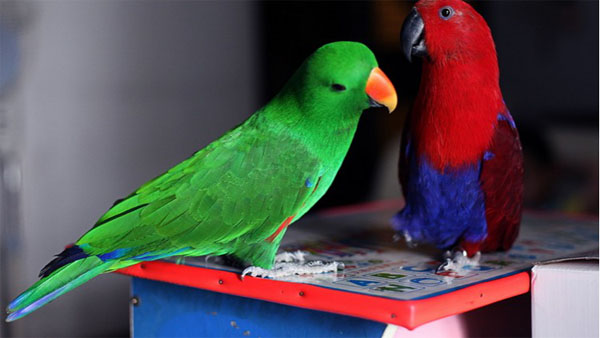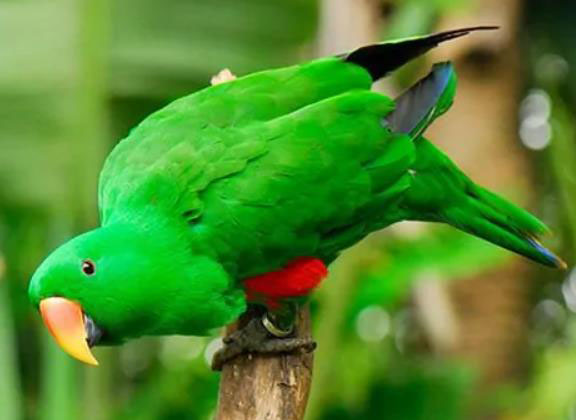Eclectus roratus
IUCN
LCBasic Information
Scientific classification
- name:Eclectus roratus
- Scientific Name:Eclectus roratus,Eclectus Parrot,Red-flanked Green Parrot
- Outline:Climbing birds
- Family:Psittaciformes Psittacidae Eclectus
Vital signs
- length:33~40cm
- Weight:380~475g
- lifetime:20years
Feature
There is a huge color difference between males and females, the female bird is bright red and the male bird is bright green.
Distribution and Habitat
Distributed in Australia, Indonesia, Papua New Guinea, Solomon Islands. Introduced: Palau, Singapore.
Eclectus Parrots live in various terrains, forests, grasslands, mangroves, coconut plantations and crop areas below 1,900 meters above sea level. They are most commonly found in crop areas, coastal areas and low-altitude forests.
Appearance
This is the species with the most obvious difference in appearance between the sexes among all parrots, with green for males and red for females. The bird has a strong and powerful beak, a hooked beak, a movable joint in the upper jaw, and a wax membrane at the base of the beak. The muscular tongue is thick. The feet are short, powerful, and zygomatic, with two toes facing forward and two toes facing backward, which is suitable for grasping and climbing.
Details
The name of the Eclectic Parrot "Eclectic" comes from the word "Eclectic", which means eclectic, and the male and female birds show completely different feather colors. This parrot is the most obvious species of parrots in terms of appearance. The bright red feathers of the female bird form a sharp contrast with the bright green of the male bird. It is a typical climbing bird, mainly inhabiting tropical rainforests and lowland forests. It usually moves in pairs and gathers in small groups during the breeding season. It is a resident bird.

The Australian Eclectic Parrot is the largest, and the Solomon Island Eclectic Parrot is the smallest. The main food is fruits, young shoots, flowers and nectar, nuts, seeds, etc., especially bananas, mangoes, figs and papayas.
Outside the breeding season, they often gather alone, in pairs or in small groups. During the breeding season, only male birds often gather together. When they gather, they are very noisy and vigilant. They usually forage in trees. In some areas of New Guinea, they are regarded as pests that destroy crops. The breeding season varies with different regions. It can be carried out at any time of the year in New Guinea, between July and February in Australia, November in Buru Island, and between June and September in the Solomon Islands. The nest is located in the hollow of a large tree, more than 30 meters above the ground. The female bird lays 2 eggs in a nest on the sawdust in the nest. The little parrot hatches after 26 days. It is late and needs to be raised by its parents for 12 weeks. After the female bird conceives the chicks, it will leave the nest alone, and the male bird will supplement the feeding twice a day.

Caged Eclectus parrots are very common. They are the quietest parrots among medium and large parrots, but sometimes they still scream and make noise, especially in the evening; compared with other medium and large parrots, the breeding difficulty of Eclectus parrots is relatively low. Female birds incubating chicks are often aggressive towards male birds. They can breed all year round. Usually, the breeding Eclectus parrots will breed stably and continuously, but there are often unfertilized eggs or parent birds infertile chicks, especially unfertilized breeding. Hand-raised male birds are lively, friendly and suitable as pet birds, while female birds are more shy and introverted, and their personalities are very different from those of extroverted male birds.








